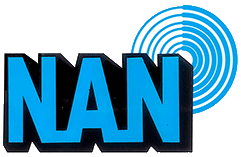Satellite Technology: How It Aids African Farmers
Why does Africa even need satellite technology integration into its agriculture? To answer this question, it’s best to let the facts speak for themselves. For example, in 2022, Nigeria faced devastating weather challenges, with intense rainfall leading to widespread flooding. This natural disaster significantly impacted the agricultural sector, resulting in a notable decrease of approximately 12% in maize production and 21% in rice yields across numerous hectares of farmland. Realizing that unfavorable weather events are the new reality that need to be considered, the country is now increasingly relying on technology to equip its farming community and feed its 200 million people. Among such innovations is the software that leverages satellite data analysis for remote crop monitoring.
In fact, according to a study by Deloitte US, agricultural productivity in Africa has the capacity to soar by 70% by 2050, thanks to the integration of technological innovations, which is vital in terms of addressing the growing food demand and the adverse effects of climate change. This piece will guide you through the benefits satellite tech can offer farmers in Africa and worldwide, zooming in on agricultural custom solutions by EOS Data Analytics to showcase how it actually works.
Why Farmers Need Satellite Technology
The success of agricultural practices and crop yields, as well as the soundness of investment decisions, hinge on a range of factors. Key players like landowners, investors, and agronomists require insights into soil health, historical land use, topography, and crop performance. And traditional field inspections often fall short in that department. Besides, there is no denying that agricultural land audits are exhaustive and not always accurate.
Farmers need detailed information about crop and soil conditions, and potential issues for efficient daily management and yield forecasting. Field scouts offer on-site evaluations for pests, diseases, and weeds, but it’s resource-intensive, particularly for large farms, to sand scouts into the fields “blindly”.
Satellite technology offers a solution, providing current and historical data about farmlands, aiding in monitoring and managing crop health efficiently, giving the opportunity to spot any deviations and sending scouts to particular spots for verification.
How Farm Management Software Assists Farming Business
Farm management software revolutionizes agricultural practices by offering advanced monitoring and analytical tools. Among these, EOS Data Analytics stands out with its EOSDA Crop Monitoring — a precision farming tool that supports smart and safe-for-environment farm management based on satellite data analytics.
EOSDA also offers custom solutions to cater to unique agricultural challenges, backed by a robust R&D team, including 5 Professors and 15 PhDs. Their expertise has led to successful projects across 5.5 million fields.
Here’s a little peek at what these solutions are about:
- Yield Prediction, with over 90% accuracy, allows predicting yields for various scales and crop types using a multi-source data algorithm.
- Crop Type Classification maps, with up to 90% accuracy, provide detailed crop distribution insights for strategic planning in various formats.
- Field Boundaries Detection enables creation of field contours for entire regions, offering data in user-friendly formats.
- Harvest Dynamics Monitoring offers analysis of harvest trends using radar and optical imagery, providing comprehensive harvest statistics.
- Advanced Soil Moisture Mapping allows delivering customers in-depth soil moisture data at surface and root levels for large-scale analysis, enhancing crop yield predictions and climate trend analysis.
To showcase what EOSDA and its solutions can do in real-life settings, let’s move on to a couple of cases.
Connecting 5,000+ Farmers to SatTech
Complete Farmer, an agricultural consultancy in Accra, Ghana, uses satellite analytics from EOSDA Crop Monitoring to enhance precision agriculture and address food security in Africa. This technological shift, focusing on remote sensing analytics, has boosted market access for local commodities and helped overcome economic challenges linked to slow tech adoption.
EOSDA Crop Monitoring empowers field experts to assist farmers, thereby enhancing both crop production and workflow effectiveness. The platform delivers vital information, including rainfall predictions and vegetation metrics, to farmers, facilitating advanced precision. Impressively, this strategy has achieved a remarkable 80% improvement in workflow efficiency and a 25% boost in crop productivity within the community of approximately 5,000 farmers, with 600 actively engaging with the software. The success of this initiative plays a pivotal role in augmenting both domestic and international market expansion.
Enabel Aiding African Farmers
Belgium’s PAIOSA program in Burundi, managed by Enabel and funded by the Belgian Government, exemplifies its commitment to sustainable African agriculture. It seeks to enhance sustainable farming practices, improve farmers’ access to finance, and encourage the adoption of advanced technologies like satellite crop monitoring.
Enabel has incorporated EOSDA Crop Monitoring into PAIOSA, using satellite data to offer critical insights to Burundian farmers — a vital step amidst escalating climate change impacts on agriculture.
Initiated in November 2021, the program now satellite-monitors 4,500 hectares of land, mainly smallholder farms. With EOSDA Crop Monitoring, agricultural experts access five vital vegetation indices, primarily for plant health assessment.
Combining satellite and drone imagery with field visits, the program enables precise crop health analysis, real-time crop verification, contour implementation, and erosion area identification. By harnessing EOSDA’s remote data, PAIOSA is advancing field productivity, augmenting agricultural value, and fostering income opportunities.
The rising possibility for African farmers to easily access and process satellite imagery marks a very special period for the continent’s agriculture. This advancement offers prospects for best possible productivity, sustainable practices, and stronger resilience in the face of climate change. As satellite technology is now more accessible and easier to use, it stands to greatly improve the lives of African farmers and positively influence local food security.
Published By
Has also recently published
 ForeignMay 5, 2024Prince Harry, Meghan accept invitation to visit Nigeria
ForeignMay 5, 2024Prince Harry, Meghan accept invitation to visit Nigeria SportsFebruary 2, 2024Trends Shaping the Future of Mobile Casinos _
SportsFebruary 2, 2024Trends Shaping the Future of Mobile Casinos _ General NewsJanuary 15, 2024Nigerian Crypto Use Continues to Grow in Q4 of 2023
General NewsJanuary 15, 2024Nigerian Crypto Use Continues to Grow in Q4 of 2023 AgricultureJanuary 14, 2024Satellite Technology: How It Aids African Farmers
AgricultureJanuary 14, 2024Satellite Technology: How It Aids African Farmers





